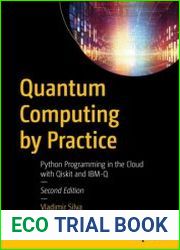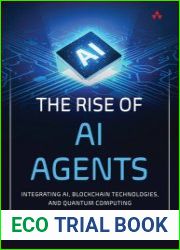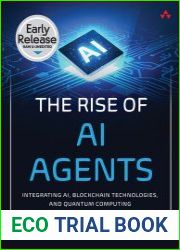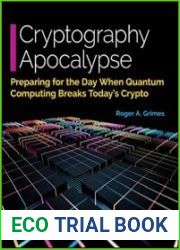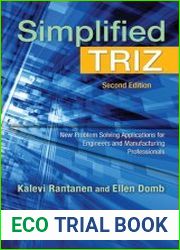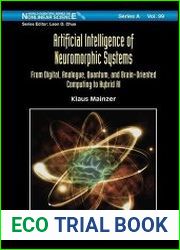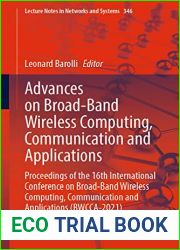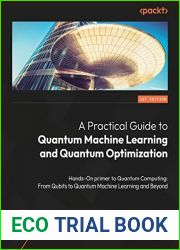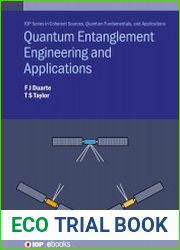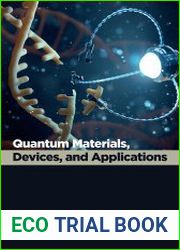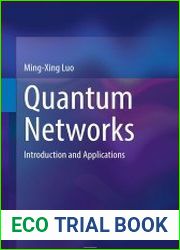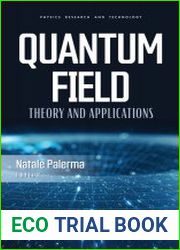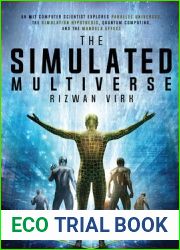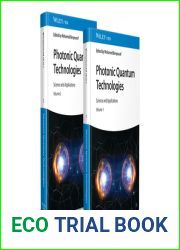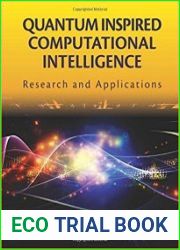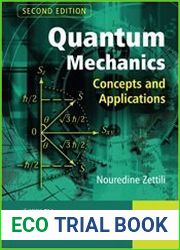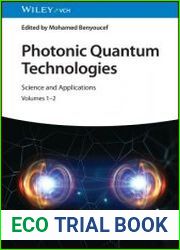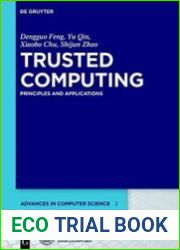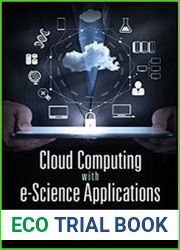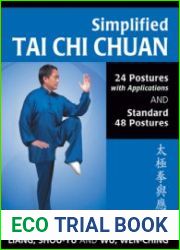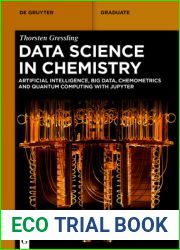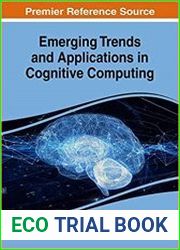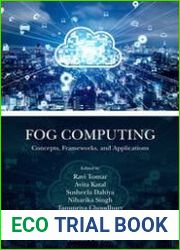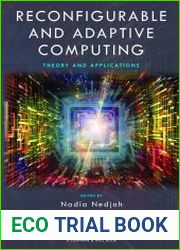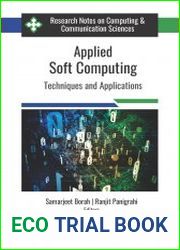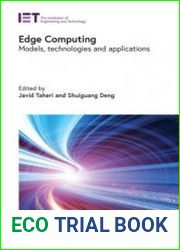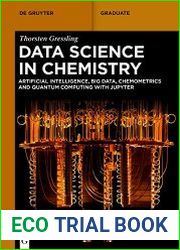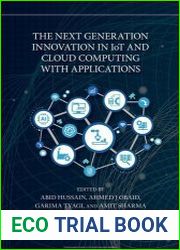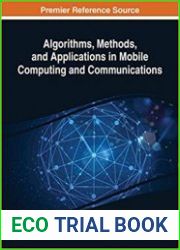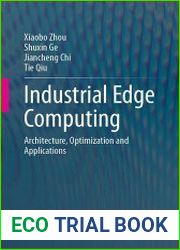
BOOKS - PROGRAMMING - Simplified Quantum Computing with Applications

Simplified Quantum Computing with Applications
Author: Koji Nagata, Do Ngoc Diep, Ahmed Farouk, Tadao Nakamura
Year: 2022
Pages: 155
Format: PDF
File size: 12.21 MB
Language: ENG

Year: 2022
Pages: 155
Format: PDF
File size: 12.21 MB
Language: ENG

Simplified Quantum Computing with Applications by Y. Chen et al. is based on an introductory textbook focusing on quantum computing theory and its applications with the aim of bridging the gap between academic research and application fields, especially those who are not familiar with quantum computing or do not have a deep background in physics. The book covers the fundamental principles of quantum mechanics and quantum computing systems and presents some of the most important quantum algorithms and applications in a simplified way that is easy to understand and adapt to the needs of the reader. The book is divided into four parts: Part 1 provides an introduction to quantum computing, including basic quantum mechanics, quantum circuits, quantum gates, quantum algorithms, and quantum error correction. It also includes a brief overview of quantum computing hardware and software. Part II introduces quantum programming, including quantum circuits and quantum algorithms, as well as a discussion of quantum error correction. Part III explores the practical applications of quantum computing, such as quantum simulation, quantum optimization, and quantum machine learning. Finally, Part IV covers advanced topics such as quantum metrology, quantum communication, and quantum cryptography. The book is written at a level accessible to undergraduate students and researchers who are new to quantum computing, as well as professionals who want to learn about quantum computing and its applications without delving too deeply into the underlying physics. It is intended to be used as a textbook for courses on quantum computing, but it can also be used as a self-study guide for those interested in learning more about this exciting field. In summary, Simplified Quantum Computing with Applications is an ideal textbook for anyone looking to gain a deeper understanding of quantum computing and its applications. The authors have put a lot of effort into making the subject matter accessible and easy to understand, so readers without a deep background in physics will find it easy to follow.
Упрощенные квантовые вычисления с приложениями Y.Chen et al.is на основе вводного учебника, посвященного теории квантовых вычислений и ее приложениям, с целью преодоления разрыва между академическими исследованиями и областями применения, особенно теми, кто не знаком с квантовыми вычислениями или не имеет глубоких знаний в физике. Книга охватывает фундаментальные принципы квантовой механики и квантовых вычислительных систем и представляет некоторые из наиболее важных квантовых алгоритмов и приложений в упрощенном виде, который легко понять и адаптировать к потребностям читателя. Книга разделена на четыре части: Часть 1 содержит введение в квантовые вычисления, включая базовую квантовую механику, квантовые схемы, квантовые затворы, квантовые алгоритмы и квантовую коррекцию ошибок. Он также включает краткий обзор аппаратного и программного обеспечения квантовых вычислений. Во второй части представлено квантовое программирование, включая квантовые схемы и квантовые алгоритмы, а также обсуждение квантовой коррекции ошибок. В части III рассматриваются практические применения квантовых вычислений, такие как квантовое моделирование, квантовая оптимизация и квантовое машинное обучение. Наконец, часть IV охватывает такие продвинутые темы, как квантовая метрология, квантовая коммуникация и квантовая криптография. Книга написана на уровне, доступном студентам бакалавриата и исследователям, которые плохо знакомы с квантовыми вычислениями, а также профессионалам, которые хотят узнать о квантовых вычислениях и их приложениях, не углубляясь слишком глубоко в лежащую в их основе физику. Он предназначен для использования в качестве учебника для курсов по квантовым вычислениям, но также может использоваться в качестве руководства для самостоятельного изучения для тех, кто заинтересован в том, чтобы узнать больше об этой захватывающей области. Таким образом, упрощенные квантовые вычисления с приложениями - это идеальный учебник для тех, кто хочет глубже понять квантовые вычисления и их приложения. Авторы приложили много усилий, чтобы сделать предмет доступным и простым для понимания, поэтому читателям без глубокого знания физики будет легко за ним следить.
Calcul quantique simplifié avec applications Y.Chen et al.is basé sur un manuel d'introduction sur la théorie de l'informatique quantique et ses applications, dans le but de combler le fossé entre la recherche académique et les domaines d'application, en particulier ceux qui ne connaissent pas l'informatique quantique ou qui n'ont pas de connaissances approfondies en physique. livre couvre les principes fondamentaux de la mécanique quantique et des systèmes informatiques quantiques et présente certains des algorithmes et applications quantiques les plus importants sous une forme simplifiée qui est facile à comprendre et à adapter aux besoins du lecteur. livre est divisé en quatre parties : La partie 1 contient une introduction aux calculs quantiques, y compris la mécanique quantique de base, les circuits quantiques, les portes quantiques, les algorithmes quantiques et la correction quantique des erreurs. Il comprend également un bref aperçu du matériel et des logiciels de calcul quantique. La deuxième partie présente la programmation quantique, y compris les circuits quantiques et les algorithmes quantiques, ainsi que la discussion sur la correction quantique des erreurs. La partie III traite des applications pratiques de l'informatique quantique, telles que la modélisation quantique, l'optimisation quantique et l'apprentissage machine quantique. Enfin, la partie IV couvre des sujets avancés tels que la métrologie quantique, la communication quantique et la cryptographie quantique. livre est écrit à un niveau accessible aux étudiants de premier cycle et aux chercheurs qui ne connaissent pas bien l'informatique quantique, ainsi qu'aux professionnels qui veulent en apprendre davantage sur l'informatique quantique et ses applications, sans trop approfondir la physique sous-jacente. Il est conçu pour être utilisé comme un tutoriel pour les cours de calcul quantique, mais peut également être utilisé comme un guide d'auto-étude pour ceux qui sont intéressés à en apprendre davantage sur ce domaine passionnant. Ainsi, le calcul quantique simplifié avec des applications est un tutoriel idéal pour ceux qui veulent mieux comprendre les calculs quantiques et leurs applications. s auteurs ont fait beaucoup d'efforts pour rendre le sujet accessible et facile à comprendre, de sorte que les lecteurs sans connaissance approfondie de la physique seront faciles à suivre.
Computación cuántica simplificada con aplicaciones Y.Chen et al.is basada en un tutorial introductorio dedicado a la teoría de la computación cuántica y sus aplicaciones, con el objetivo de cerrar la brecha entre la investigación académica y los campos de aplicación, especialmente aquellos que no están familiarizados con la computación cuántica o no tienen un conocimiento profundo en física. libro abarca los principios fundamentales de la mecánica cuántica y los sistemas de computación cuántica y presenta algunos de los algoritmos y aplicaciones cuánticas más importantes en una forma simplificada que es fácil de entender y adaptar a las necesidades del lector. libro se divide en cuatro partes: Parte 1 contiene una introducción a los cálculos cuánticos, incluyendo mecánica cuántica básica, esquemas cuánticos, obturadores cuánticos, algoritmos cuánticos y corrección cuántica de errores. También incluye una breve descripción del hardware y software de computación cuántica. La segunda parte presenta la programación cuántica, incluyendo circuitos cuánticos y algoritmos cuánticos, así como la discusión de la corrección cuántica de errores. En la parte III se examinan las aplicaciones prácticas de la computación cuántica, como la simulación cuántica, la optimización cuántica y el aprendizaje automático cuántico. Finalmente, la parte IV abarca temas avanzados como la metrología cuántica, la comunicación cuántica y la criptografía cuántica. libro está escrito a un nivel disponible para estudiantes de pregrado e investigadores que no están bien familiarizados con la computación cuántica, así como profesionales que quieren aprender sobre la computación cuántica y sus aplicaciones sin profundizar demasiado en la física subyacente. Está diseñado para ser utilizado como un tutorial para cursos de computación cuántica, pero también puede ser utilizado como una guía para el estudio independiente para aquellos interesados en aprender más sobre este campo emocionante. Por lo tanto, la computación cuántica simplificada con aplicaciones es el tutorial ideal para aquellos que quieren entender más a fondo la computación cuántica y sus aplicaciones. autores han hecho un gran esfuerzo para que el tema sea accesible y fácil de entender, por lo que será fácil que los lectores sin un conocimiento profundo de la física lo sigan.
Computação quântica simplificada com aplicativos Y.Chen e al.is baseados em um tutorial introdutivo sobre a teoria da computação quântica e suas aplicações, para superar o fosso entre a pesquisa acadêmica e as áreas de aplicação, especialmente aqueles que não conhecem a computação quântica ou não têm conhecimento profundo da física. O livro abrange os princípios fundamentais da mecânica quântica e da computação quântica e apresenta alguns dos algoritmos e aplicações quânticos mais importantes de uma forma simplificada que é fácil de compreender e adaptar às necessidades do leitor. O livro é dividido em quatro partes: a parte 1 contém introduções à computação quântica, incluindo mecânica quântica básica, esquemas quânticos, fechamentos quânticos, algoritmos quânticos e correção quântica de erros. Ele também inclui uma breve visão de hardware e software de computação quântica. A segunda parte apresenta uma programação quântica, incluindo esquemas quânticos e algoritmos quânticos, além de discutir a correção quântica de erros. A parte III aborda aplicações práticas da computação quântica, tais como modelagem quântica, otimização quântica e aprendizagem de máquinas quânticas. Finalmente, a parte IV abrange temas avançados como metrologia quântica, comunicação quântica e criptografia quântica. O livro foi escrito em um nível disponível para estudantes de licenciatura e pesquisadores que não estão familiarizados com a computação quântica, bem como para profissionais que querem aprender sobre computação quântica e suas aplicações sem se aprofundar muito na física subjacente. Ele é projetado para ser usado como um tutorial para cursos de computação quântica, mas também pode ser usado como um guia de estudo independente para aqueles interessados em aprender mais sobre esta área emocionante. Assim, a computação quântica simplificada com aplicativos é um tutorial perfeito para aqueles que querem entender mais a computação quântica e suas aplicações. Os autores têm trabalhado muito para tornar a matéria acessível e fácil de compreender, de modo que os leitores sem o conhecimento profundo da física serão fáceis de segui-la.
Elaborazione quantistica semplificata con applicazioni Y.Chen et al.is, basata su un manuale introduttivo dedicato alla teoria della computazione quantistica e alle sue applicazioni, al fine di colmare il divario tra ricerca accademica e applicazioni, specialmente quelle che non conoscono calcoli quantistici o non hanno conoscenze profonde della fisica. Il libro comprende i principi fondamentali della meccanica quantistica e dei sistemi di calcolo quantistico e presenta alcuni dei più importanti algoritmi e applicazioni quantistiche in modo semplificato, che è facile da comprendere e adattare alle esigenze del lettore. Il libro è suddiviso in quattro parti: la parte 1 contiene un'introduzione alla computazione quantistica, tra cui meccanica quantistica di base, schemi quantistici, chiusure quantistiche, algoritmi quantistici e correzione quantistica degli errori. Include anche una breve panoramica dell'hardware e del software di calcolo quantistico. La seconda parte presenta la programmazione quantistica, compresi gli schemi quantistici e gli algoritmi quantistici, e la discussione sulla correzione quantistica degli errori. La parte III affronta le applicazioni pratiche della computazione quantistica, come la simulazione quantistica, l'ottimizzazione quantistica e l'apprendimento delle macchine quantistiche. Infine, la parte IV riguarda temi avanzati come metrologia quantistica, comunicazione quantistica e crittografia quantistica. Il libro è scritto su un livello accessibile agli studenti di laurea e ai ricercatori che non conoscono bene la computazione quantistica, ma anche ai professionisti che vogliono imparare la computazione quantistica e le loro applicazioni senza approfondire troppo la loro fisica sottostante. È progettato per essere utilizzato come manuale per corsi di calcolo quantistico, ma può anche essere usato come guida per lo studio autonomo per coloro che sono interessati a saperne di più su questo campo affascinante. In questo modo, il calcolo quantistico semplificato con le applicazioni è il manuale ideale per coloro che vogliono comprendere meglio i calcoli quantistici e le loro applicazioni. Gli autori hanno fatto molti sforzi per rendere la materia accessibile e facile da comprendere, in modo che i lettori senza una profonda conoscenza della fisica sarà facile da seguire.
Vereinfachtes Quantencomputing mit Anwendungen Y.Chen et al.is auf der Grundlage eines einführenden hrbuchs, das sich mit der Theorie des Quantencomputings und ihren Anwendungen befasst, mit dem Ziel, die Lücke zwischen akademischer Forschung und Anwendungsbereichen zu schließen, insbesondere für diejenigen, die mit Quantencomputing nicht vertraut sind oder über keine fundierten Kenntnisse in der Physik verfügen. Das Buch behandelt die grundlegenden Prinzipien der Quantenmechanik und der Quantencomputersysteme und präsentiert einige der wichtigsten Quantenalgorithmen und -anwendungen in vereinfachter Form, die leicht zu verstehen und an die Bedürfnisse des sers anzupassen sind. Das Buch ist in vier Teile gegliedert: Teil 1 enthält eine Einführung in das Quantencomputing, darunter grundlegende Quantenmechanik, Quantenschaltungen, Quantengatter, Quantenalgorithmen und Quantenfehlerkorrektur. Es enthält auch einen kurzen Überblick über die Hardware und Software des Quantencomputers. Der zweite Teil präsentiert die Quantenprogrammierung einschließlich Quantenschaltungen und Quantenalgorithmen sowie eine Diskussion zur Quantenfehlerkorrektur. Teil III befasst sich mit den praktischen Anwendungen des Quantencomputers wie Quantenmodellierung, Quantenoptimierung und Quantenmaschinenlernen. Schließlich behandelt Teil IV fortgeschrittene Themen wie Quantenmetrologie, Quantenkommunikation und Quantenkryptographie. Das Buch ist auf einer Ebene geschrieben, die Bachelor-Studenten und Forschern, die mit Quantencomputing nicht vertraut sind, sowie Fachleuten, die sich über Quantencomputing und ihre Anwendungen informieren möchten, ohne zu tief in die zugrunde liegende Physik einzudringen, zur Verfügung steht. Es soll als hrbuch für Kurse in Quantencomputing dienen, kann aber auch als itfaden für Selbststudium für Interessierte verwendet werden, um mehr über dieses spannende Gebiet zu erfahren. Vereinfachtes Quantencomputing mit Anwendungen ist daher das perfekte Tutorial für diejenigen, die ein tieferes Verständnis des Quantencomputings und seiner Anwendungen haben möchten. Die Autoren haben sich viel Mühe gegeben, das Thema zugänglich und leicht verständlich zu machen, so dass es für ser ohne fundierte Kenntnisse der Physik leicht sein wird, ihm zu folgen.
Uproszczone obliczenia kwantowe z aplikacjami przez Y.Chen et al.is na podstawie podręcznika wstępnego na temat teorii obliczeń kwantowych i jego zastosowań, w celu zlikwidowania luki między badaniami akademickimi i zastosowaniami, zwłaszcza tych nieznanych z obliczeń kwantowych lub brak dogłębnej wiedzy fizyki. Książka obejmuje podstawowe zasady mechaniki kwantowej i systemów obliczeniowych kwantowych oraz przedstawia niektóre z najważniejszych algorytmów kwantowych i zastosowań w uproszczonej formie, łatwej do zrozumienia i dostosowania do potrzeb czytelnika. Księga podzielona jest na cztery części: Część 1 zawiera wprowadzenie do obliczeń kwantowych, w tym podstawową mechanikę kwantową, obwody kwantowe, bramy kwantowe, algorytmy kwantowe i korektę błędów kwantowych. Zawiera również krótki przegląd sprzętu i oprogramowania do obliczeń kwantowych. Druga część przedstawia programowanie kwantowe, w tym obwody kwantowe i algorytmy kwantowe, a także omówienie korekty błędów kwantowych. Część III bada praktyczne zastosowania obliczeń kwantowych, takich jak modelowanie kwantowe, optymalizacja kwantowa i kwantowe uczenie maszynowe. Wreszcie część IV obejmuje takie zaawansowane tematy jak metrologia kwantowa, komunikacja kwantowa i kryptografia kwantowa. Książka jest napisana na poziomie dostępnym dla studentów i naukowców, którzy są nowi do obliczeń kwantowych, a także profesjonalistów, którzy chcą dowiedzieć się o obliczeniach kwantowych i ich zastosowaniach, nie zagłębiając się w fizykę. Ma służyć jako podręcznik do ćwiczeń obliczeniowych kwantowych, ale może być również wykorzystywany jako przewodnik dla osób zainteresowanych nauką o tej ekscytującej dziedzinie. Uproszczone obliczenia kwantowe z aplikacjami są więc idealnym podręcznikiem dla tych, którzy chcą dalej rozumieć obliczenia kwantowe i ich zastosowania. Autorzy poczynili wiele starań, aby temat był dostępny i łatwy do zrozumienia, więc czytelnikom bez głębokiej znajomości fizyki łatwiej będzie go śledzić.
מחשוב קוונטי מפושט עם יישומים על ידי Y.Chen et al.is מבוסס על ספר מבוא על תורת המיחשוב הקוונטי ויישומיו, במטרה לגשר על הפער בין מחקר אקדמי ליישומים, במיוחד אלה שאינם מכירים מחשוב קוונטי או חסר ידע מעמיק בפיזיקה. הספר עוסק בעקרונות היסוד של מכניקת הקוונטים ומערכות מחשוב קוונטיות ומציג כמה מהאלגוריתמים והיישומים הקוונטיים החשובים ביותר בצורה מפושטת שקל להבין ולהתאים לצורכי הקורא. הספר מחולק לארבעה חלקים: חלק 1 מכיל הקדמה למחשוב קוונטי, כולל מכניקת קוונטים בסיסית, מעגלים קוונטיים, שערים קוונטיים, אלגוריתמים קוונטיים ותיקון שגיאות קוונטיות. היא כוללת גם סקירה קצרה של חומרת מחשב קוונטי ותוכנה. החלק השני מציג תכנות קוונטי, כולל מעגלים קוונטיים ואלגוריתמים קוונטיים, כמו גם דיון על תיקון שגיאות קוונטיות. חלק III בוחן יישומים מעשיים של מחשוב קוונטי, כגון מודול קוונטי, אופטימיזציה קוונטית ולמידה של מכונה קוונטית. לבסוף, חלק 4 מכסה נושאים מתקדמים כגון מטרולוגיה קוונטית, תקשורת קוונטית וקריפטוגרפיה קוונטית. הספר נכתב ברמה הנגישה לסטודנטים וחוקרים לתואר ראשון, חדשים במחשוב קוונטי, כמו גם אנשי מקצוע שרוצים ללמוד על מחשוב קוונטי ויישומיו מבלי להיכנס עמוק מדי לתוך הפיזיקה שמאחוריו. הוא נועד לשמש כספר לימוד לקורסי מחשוב קוונטים, אך יכול לשמש גם כמדריך למידה עצמית למי שמעוניין ללמוד יותר על תחום מרגש זה. לפיכך, מחשוב קוונטי מפושט עם יישומים הוא ספר לימוד אידיאלי עבור מי שרוצים להמשיך ולהבין את המחשוב הקוונטי ואת יישומיו. המחברים עשו מאמצים רבים להפוך את הנושא לנגיש וקל להבנה, כך שיהיה קל לקוראים ללא ידע עמוק בפיזיקה לעקוב אחריו.''
Y.Chen ve al.is tarafından hazırlanan Uygulamalarla Basitleştirilmiş Kuantum Hesaplama, kuantum hesaplama teorisi ve uygulamaları üzerine giriş niteliğindeki bir ders kitabına dayanarak, akademik araştırma ve uygulamalar arasındaki boşluğu doldurmak amacıyla, özellikle kuantum hesaplamasına aşina olmayanlar veya derinlemesine fizik bilgisi olmayanlar. Kitap, kuantum mekaniğinin ve kuantum hesaplama sistemlerinin temel ilkelerini kapsar ve en önemli kuantum algoritmalarının ve uygulamalarının bazılarını, okuyucunun ihtiyaçlarına göre anlaşılması ve uyarlanması kolay basitleştirilmiş bir biçimde sunar. Kitap dört bölüme ayrılmıştır: Bölüm 1, temel kuantum mekaniği, kuantum devreleri, kuantum kapıları, kuantum algoritmaları ve kuantum hata düzeltmesi dahil olmak üzere kuantum hesaplamaya bir giriş içerir. Ayrıca kuantum hesaplama donanım ve yazılımına kısa bir genel bakış içerir. İkinci bölüm, kuantum devreleri ve kuantum algoritmaları da dahil olmak üzere kuantum programlamayı ve ayrıca kuantum hata düzeltme tartışmasını sunar. Bölüm III, kuantum modelleme, kuantum optimizasyonu ve kuantum makine öğrenimi gibi kuantum hesaplamanın pratik uygulamalarını inceler. Son olarak, Bölüm IV, kuantum metrolojisi, kuantum iletişimi ve kuantum kriptografisi gibi ileri konuları kapsar. Kitap, kuantum hesaplamada yeni olan lisans öğrencileri ve araştırmacıların yanı sıra, arkasındaki fiziğe çok fazla girmeden kuantum hesaplama ve uygulamaları hakkında bilgi edinmek isteyen profesyonellerin erişebileceği bir düzeyde yazılmıştır. Kuantum hesaplama kursları için bir ders kitabı olarak hizmet etmesi amaçlanmıştır, ancak bu heyecan verici alan hakkında daha fazla bilgi edinmek isteyenler için kendi kendine çalışma rehberi olarak da kullanılabilir. Bu nedenle, uygulamalarla basitleştirilmiş kuantum hesaplama, kuantum hesaplama ve uygulamalarını daha fazla anlamak isteyenler için ideal bir ders kitabıdır. Yazarlar konuyu erişilebilir ve anlaşılması kolay hale getirmek için çok çaba sarf ettiler, bu yüzden derin bir fizik bilgisi olmayan okuyucuların onu takip etmesi kolay olacak.
الحوسبة الكمية المبسطة مع التطبيقات بواسطة Y.Chen et al.is استنادًا إلى كتاب مدرسي تمهيدي حول نظرية الحوسبة الكمومية وتطبيقاتها، بهدف سد الفجوة بين الأبحاث والتطبيقات الأكاديمية، لا سيما تلك غير المألوفة للحوسبة الكمومية أو تفتقر إلى المعرفة المتعمقة بالفيزياء. يغطي الكتاب المبادئ الأساسية لميكانيكا الكم وأنظمة الحوسبة الكمومية ويقدم بعضًا من أهم خوارزميات وتطبيقات الكم في شكل مبسط يسهل فهمه والتكيف مع احتياجات القارئ. ينقسم الكتاب إلى أربعة أجزاء: يحتوي الجزء 1 على مقدمة للحوسبة الكمومية، بما في ذلك ميكانيكا الكم الأساسية والدوائر الكمومية والبوابات الكمومية والخوارزميات الكمومية وتصحيح الخطأ الكمي. كما يتضمن لمحة عامة موجزة عن أجهزة وبرامج الحوسبة الكمومية. يعرض الجزء الثاني البرمجة الكمومية، بما في ذلك الدوائر الكمومية والخوارزميات الكمومية، بالإضافة إلى مناقشة تصحيح الخطأ الكمي. يفحص الجزء الثالث التطبيقات العملية للحوسبة الكمومية، مثل النمذجة الكمومية والتحسين الكمي والتعلم الآلي الكمي. أخيرًا، يغطي الجزء الرابع مواضيع متقدمة مثل علم القياس الكمي والاتصال الكمي والتشفير الكمي. الكتاب مكتوب على مستوى يمكن الوصول إليه للطلاب الجامعيين والباحثين الجدد في الحوسبة الكمومية، بالإضافة إلى المحترفين الذين يرغبون في التعرف على الحوسبة الكمومية وتطبيقاتها دون التعمق في الفيزياء الكامنة وراءها. يهدف إلى أن يكون بمثابة كتاب مدرسي لدورات الحوسبة الكمومية، ولكن يمكن استخدامه أيضًا كدليل للدراسة الذاتية لأولئك المهتمين بمعرفة المزيد عن هذا المجال المثير. وبالتالي، فإن الحوسبة الكمومية المبسطة مع التطبيقات هي كتاب مدرسي مثالي لأولئك الذين يرغبون في فهم الحوسبة الكمومية وتطبيقاتها بشكل أكبر. بذل المؤلفون الكثير من الجهود لجعل الموضوع سهل الوصول إليه وسهل الفهم، لذلك سيكون من السهل على القراء الذين ليس لديهم معرفة عميقة بالفيزياء متابعته.
Y.Chen 등의 응용 프로그램으로 단순화 된 양자 컴퓨팅은 양자 컴퓨팅 이론과 응용 프로그램에 대한 입문 교과서를 기반으로하며, 학술 연구와 응용 프로그램 사이의 격차, 특히 양자 컴퓨팅에 익숙하지 않거나 물리학에 대한 지식. 이 책은 양자 역학 및 양자 컴퓨팅 시스템의 기본 원리를 다루며 가장 중요한 양자 알고리즘과 응용 프로그램 중 일부를 독자의 요구를 이해하고 적응하기 쉬운 단순화 된 형태로 제시합니다. 이 책은 네 부분으로 나뉩니다. 1 부에는 기본 양자 역학, 양자 회로, 양자 게이트, 양자 알고리즘 및 양자 오류 보정을 포함한 양자 컴퓨팅에 대한 소개가 포함되어 있습니다. 또한 양자 컴퓨팅 하드웨어 및 소프트웨어에 대한 간략한 개요가 포함되어 두 번째 부분은 양자 회로 및 양자 알고리즘을 포함한 양자 프로그래밍과 양자 오류 수정에 대한 논의를 제공합니다. Part III은 양자 모델링, 양자 최적화 및 양자 기계 학습과 같은 양자 컴퓨팅의 실제 응용 분야를 검토합니다. 마지막으로, 파트 IV는 양자 계측, 양자 통신 및 양자 암호화와 같은 고급 주제를 다룹니다. 이 책은 양자 컴퓨팅에 익숙하지 않은 학부 학생 및 연구원뿐만 아니라 양자 컴퓨팅 및 응용 프로그램에 대해 배우고 자하는 전문가가 액세스 할 수있는 수준으로 작성되었습니다. 양자 컴퓨팅 과정을위한 교과서 역할을하기위한 것이지만이 흥미로운 분야에 대해 더 많이 배우고 자하는 사람들을위한 자체 학습 안내서로도 사용될 수 있습니다. 따라서 응용 프로그램으로 단순화 된 양자 컴퓨팅은 양자 컴퓨팅과 응용 프로그램을 더 이해하려는 사람들에게 이상적인 교과서입니다. 저자는 주제에 접근 가능하고 이해하기 쉽도록 많은 노력을 기울 였으므로 물리학에 대한 깊은 지식이없는 독자가 쉽게 따라갈 수 있습니다.
量子コンピューティングとアプリケーションの簡略化Y。Chen et al.is、量子コンピューティングの理論とその応用に関する入門書に基づいており、特に量子コンピューティングに精通していない、または物理学の深い知識を欠いている、学術研究と応用の間のギャップを埋めることを目的としている。この本は、量子力学と量子コンピューティングシステムの基本原理を網羅しており、最も重要な量子アルゴリズムとアプリケーションのいくつかを、読者のニーズを理解し、適応しやすい簡略化された形で提示しています。パート1には、基本的な量子力学、量子回路、量子ゲート、量子アルゴリズム、量子誤差補正などの量子コンピューティングの紹介が含まれています。また、量子コンピューティングハードウェアとソフトウェアの簡単な概要も含まれています。第2部では、量子回路や量子アルゴリズムなどの量子プログラミングや、量子誤差補正について解説します。Part IIIでは、量子モデリング、量子最適化、量子機械学習などの量子コンピューティングの実用化を検討しています。最後に、Part IVは量子計測、量子通信、量子暗号などの高度なトピックをカバーしています。この本は、量子コンピューティングの初心者である学部生や研究者、およびその背後にある物理学に深く入ることなく量子コンピューティングとそのアプリケーションについて学びたい専門家にアクセスできるレベルで書かれています。量子コンピューティングコースの教科書として機能することを目的としていますが、このエキサイティングな分野についてもっと学びたい人のための自己学習ガイドとしても使用できます。したがって、アプリケーションによる簡素化された量子コンピューティングは、量子コンピューティングとそのアプリケーションをさらに理解したい人にとって理想的な教科書です。著者たちは、この主題にアクセスしやすく、理解しやすいものにするために多くの努力を払ったので、物理学に関する深い知識がない読者がそれに従うことは容易になるでしょう。










